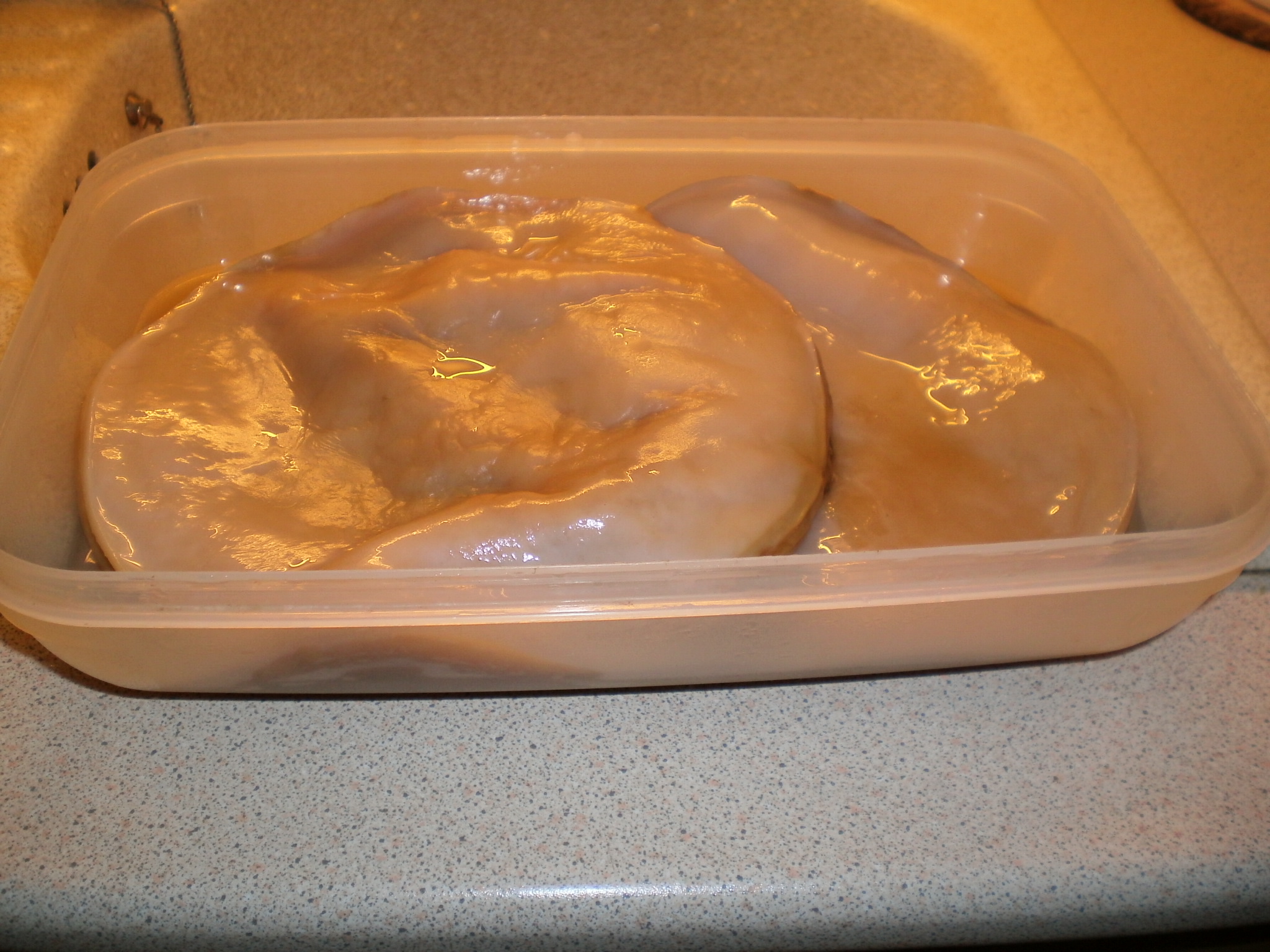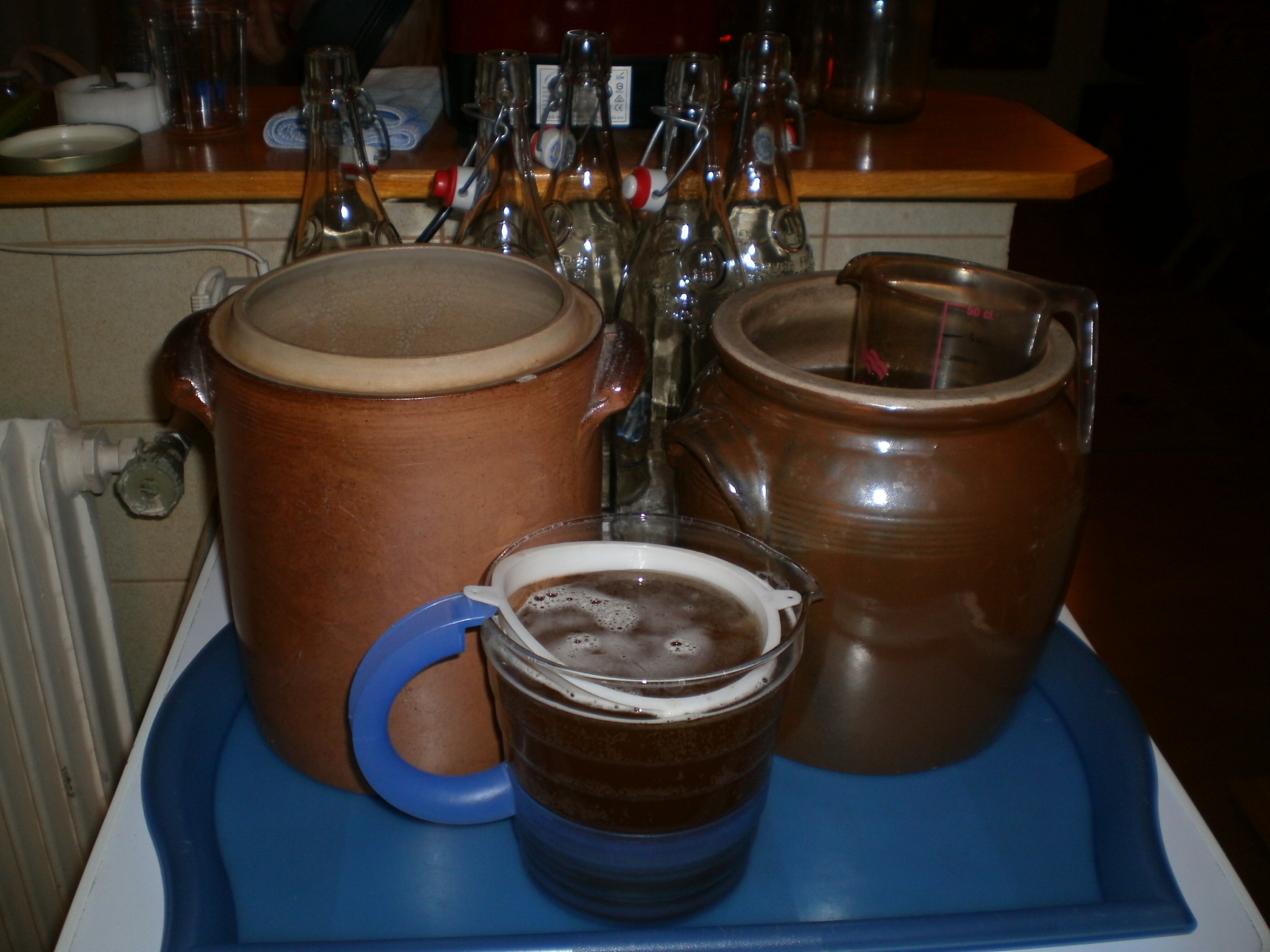1.The combucha
Combucha is a symbiotic colony of several bacteria and yeasts.
One of the main components of combucha drinks is glucuronic acid.
In the body, glucuronic acid is synthesized by the liver.
By binding endogenous and exogenous toxins, it enables their elimination via bile and urine.
These glucuronic acid-bound toxins cannot be reabsorbed by the intestine or kidneys.
Glucuronic acid has a detoxifying effect on the body.
The drink should invigorate the entire body.
Glucuronic acid is also found in bound form in polysaccharides such asacide_hyaluronique
(connective tissue substance) chondroitin sulfate (the basic substance of cartilage) mucoidin sulfate (substance found in the stomach mucosa and crystalline lens) and heparan-sulfate with a structure very similar to heparin.
The combucha drink should therefore be useful in cases of arthritis, arthrosis, thrombosis, to protect the stomach and the crystalline lens.
In addition to glucuronic acid, the drink contains right-rotating D-lactic acid. ( ) which contributes to the anti-cancer, usnic acid (antibacterial, antiviral) oxalic acid, acetic acid, B vitamins (B1,B2,B6,B12,folic acid) and vitamin C.
The reported effects are therefore not surprising: regulation of intestinal disorders (in 1917 by Professor Lindler) constipation (Dr. Hennneberg 1926) beneficial effect on arteriosclerosis (Dr Madaus 1927) infectious diarrhea, bronchitis, asthma, allergies, hypercholesterolemia, uremia, nervousness, menopausal hot flashes, increased immune system potential, etc.
2.Preparing combucha drinks
-
- ingredients :
- water (filtered is better)
- 70 to 100 grams of sugar per liter of water (1)
- black or green tea: 1 to 2 teaspoons per liter of sugar water
- heat the water to boiling, lower the heat and add the sugar. (gently) ,
make sure the sugar has melted, then heat the water again.
- when the water boils again, remove the pan from the heat.
- add black or green tea: 1 to 2 teaspoons per liter of sugar water
- infuse for 10-15 minutes, or leave until the tea has cooled.
- pass the tea (a plastic coffee filter is ideal)
- pour the tea into an earthenware, stoneware, porcelain or glass vessel with a large opening surface.
(2)
- when the tea has cooled, add a little ready-made drink (I use one glass for 3 liters) .
- place the mushroom with the smoothest, shiniest and lightest surface facing upwards.
- close the jar opening with gauze held in place by a rubber band (3)
- place in a quiet, warm area (20 to 30 °C) and airy (fresh air for oxygen, heat for metabolism) .
No sun directly on the preparation (4)
- leave for 8 days (more or less, depending on conditions, up to 15 days) (5)
- remove the fungus after washing your hands (rinsed well in hot water) place it in a very clean container.
(6)
- fill bottles with ready-mixed beverage using a colander (reuse plastic coffee filters, for example) (7)
- store bottles in a cool, shady place (in a cupboard) .
Leave bottles to rest for several days (8) .
- rinse container, carefully wash mushroom under cold running water.
rinse the container with very hot water and remove any residues that may have stuck to the inside wall (9) .
- do not smoke in the room where the mushroom is located.
Tobacco smoke kills the fungus.
- drink a third of a liter a day.
Gradually curative, up to a liter a day.
(10)
- attention: comboucha being a living liquid containing yeast, in the event of even a slight yeast allergy-conscious, symptoms may worsen.
(1) the sugar doesn't have to be complete; the fungus feeds on sucrose and the minerals provided by the tea.
(2) stoneware pickle jars are ideal.
You can find old ones on flea markets (between 25 and 30 euros:take those with the lid) and new from specialist kitchen wholesalers (between 10 and 20 euros depending on size) .
for example: kawa
en Importers of china tea, exotic foods, restaurant equipment.
89-94 avenue de Choisy 75013 PARIS, 3 place Stalingrad 75010 PARIS.
It's important to understand that sugar and tea are the mushroom's food, not ours.
We drink the liquid produced by the combusha's transformation of these elements.
(3) gauze or porous fabric lets air through.
The fungus consumes oxygen.
(4) which is why opaque stoneware pots are preferable to glass.
(5) the ideal transformation time is not fixed and probably depends on many factors.
This may be due to the accumulation of carbon dioxide under the mushroom, which raises it above the liquid, thus limiting exchanges.
After 8 days, taste the solution (for example, by pushing the mushroom aside and dipping a ladle into the pot.) - If the solution is still too sweet, wait a few more days.
- a good comboucha is, in my opinion: slightly sweet, fruity, acidic, tangy and sparkling (carbon dioxide bubble resulting from mushroom respiration) and astringent (short tongue) .
- if you'll be away for several weeks and therefore unable to take care of the fungus.
slow down your metabolism: Put the lid on the jar, leaving the gauze on for minimum ventilation, and place it at a temperature between 15 and 18 degrees if possible.
(6) take care of your mushroom and it will take care of you.
You'll experience a symbiotic relationship with the mushroom.
(7) yeast settles at the bottom of the jar.
They may form an opaque residue (black) which becomes clearer when the solution is shaken.
Shake the solution as little as possible when pouring if you want to keep the carbon dioxide in the liquid.
The result is a sparkling beverage that proudly bears comparison with cider.
For bottles, the ideal solution is to use lemonade or beer bottles with mechanical corks, or champagne or cider bottles with mechanical corks. (found in drugstores or country supermarkets in places where cider is made.
0.
5 EUR per cork approx.) .
(8) the liquid continues to work even when the bottle is closed.
A small fungus may form and yeast may settle at the bottom.
In a well-insulated bottle, the liquid improves.
A few days to get a drink comparable to cider.
Work in the bottle will depend on how full the bottle is.
If it's filled to the brim, there's no additional oxygen other than that dissolved in the liquid, so the work is limited.
If the bottle is partially filled, it will work a lot.: beware of gas when opening.
(9) if relatively large amounts of fungus debris run off with the water, run hot water for a few seconds to make sure it's completely removed.
(10) when first consuming this drink, care must be taken as the intestinal flora may be transformed.
This may result in a temporary disruption in elimination. (constipation or diahrea) until the digestive tract finds its new equilibrium.
2.1.Producing a comboucha mother
It's easy to produce a combusha mother if you don't have one to begin with.
All you need is a little drink, and prepare the comboucha as follows-but in smaller quantities - 1 liter is more than enough.
The liquid combucha replaces the mother.-as it contains yeast and bacteria, it will help to reconstitute it.
after pouring the comboucha beverage into the prepared sweet tea, leave it to develop in the container for at least 2 weeks.
so that the mother that forms on the surface of the liquid is thick enough to handle without tearing.
the resulting drink will be highly acidic and is not suitable for drinking. (except for use as vinegar) but you'll have a mother-in-law (no pun intended)
ready to be used for new production.
you can therefore set aside your production with the assurance of being able to restart it with a drink in hand.
a hermetically sealed bottle for many months (tested with a bottle over 10 months old) .
it should work with a commercial bottle, as the drink is not pasteurized. (to be verified..producing a comboucha mother)
So you can buy a bottle of Kombucha in an organic store to start your own production if you don't have a drink.
3.GĂĽnther W Frank
GĂĽnther W.
Frank is a German doctor who has studied kombucha and written a reference book translated into French, which can easily be found in organic stores or on the website of GĂĽnther_W_Frank
of "Comboucha - The mushroom drink of long life - Practical instructions for preparation and use" experiences_vecues_de_kombucha
reported by GĂĽnther W. Frank.
kombucha
3.1.Glass of combucha

3.2.Combucha mother

3.3.Combucha preparation equipment



